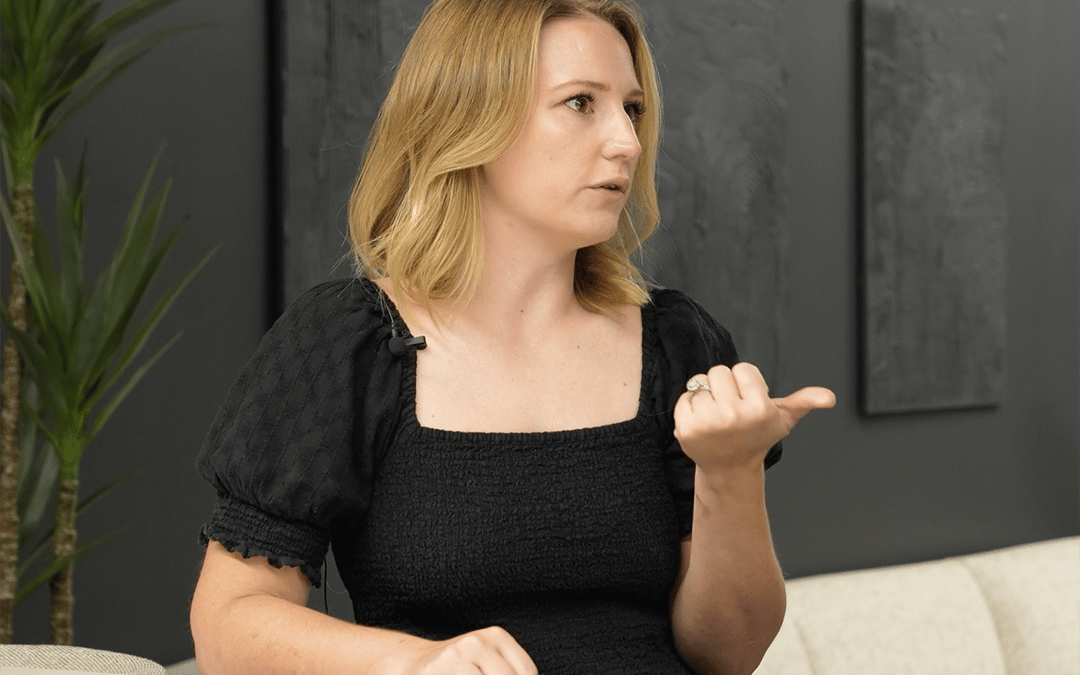Financial Best Practices During Economic Volatility
SARAH RIGGIO
Video Transcript
Today we’re going to be talking a bit about a few different financial metrics and behaviors
that you want to have in place. I know that some of these are somewhat evergreen, right The’re relevant all the time. But there are specific things that you want to be looking at in an inflationary or recessionary environment? Is that true? Yeah, absolutely. So first of those being our cash position, I’m paying a lot more attention to that. I think I’m much more intentional about our approach there.
So that’s one of the things. Next, I’m thinking a lot about long-term debt in this way that in non-inflationary environments I’m probably not quite as concerned about. And then finally, I’m thinking a lot about of our expense management strategy over the next, you know, when I’m thinking about 2023, 2024. What does our expense structure look like in the business?
So in thinking about cash flow management, right? That’s something that is important all the time. There are certain best practices that just become more valuable during sort of tough environments, right? Yeah. Can you tell me what you’re thinking about in terms of cash flow specifically? The thing that’s really different in this environment, versus maybe a year ago or two years ago, is my kind of risk tolerance there? So before I might be willing to negotiate payment terms to a little bit longer net terms, or I might be willing to get a little bit further into the work 00:01:25,452 –> 00:01:26,653 before we receive payment. Those types of things.
In our current state, I’m a little bit more hesitant in those spaces. So I’m watching our AR every single day. We’re being very intentional about our communications with clients in that space and how often that we’re talking to them, what their plan is around their outstanding invoices, those types of things. Yeah.
So if we’re thinking about, you know, in our clients’ worlds, or the business space in general, these service businesses that have large contract sizes that are spread out over the course of the fulfillment of that work. That’s an area that’s really important for them to be paying attention to. Absolutely. That’s the easiest place to lean into when you’re trying to work through your cash position. The flipside of that is also on your accounts payable side in your contracts with your vendors. Is there a place where maybe I shorten the net terms but get a better rate for our expense side? Is there a place where maybe I want to lengthen the terms instead of paying a full installment once a year, maybe I want to break it out. So cash position is really this breakout of those two things.
And I’m trying to equally balance those as I’m planning for the next year. And on some level, it’s this game of balancing risk, risk mitigation, while maintaining good, positive customer relationships, making sure that it’s a win-win environment for both parties in that situation.
If I’m not managing our cash position well, it makes my ability to be a great client partner much more difficult. So by being intentional in the way that we handle our cash, it allows me to better accommodate the requests of our clients.
So obviously there’s some best practices there that pay dividends, you know, in positive environments, when things are going really well. But I know one thing that we sort of touched on earlier that’s very specific to this environment is how you’re thinking about long-term debt with regards to inflation. Absolutely. Can you break down some best practices there? Yeah. So long-term debt plays into that in terms of what are we paying on it? How often are we paying? And what’s the interest rate on those types of things?
So the thing about an inflationary environment specifically is there are scenarios in which I would typically want to just eliminate 0ur long-term debt, and I’m willing to give up the cash position in order to do that. So there’s a scenario in which that — and that reduces my monthly cash outflows in this way that can be beneficial to the business.
However, in an inflationary environment, there is a season of is it worth it for me to give up the cash position to eliminate that long-term debt in an inflationary environment? I would argue there’s a lot of times where that’s not the case, and that’s because if for some reason I gave up that cash position and then needed to fund a purchase of some sort, I’m likely to be paying a higher interest rate in an inflationary environment, especially right now where we know the Federal Reserve is going to continue to increase interest rates. I’m likely to pay a higher premium on some new debt than I would on the debt that I’m holding right now. And then bringing us around to expense management. Right.
That’s another one that I feel like you always manage expenses prudently. You want to be very thoughtful about how you’re doing those things, but what’s different in a tough environment that you’re thinking about specifically for expenses? Having great behaviors around the expense structure during great economic seasons has allowed us to ensure that when things do get difficult, we don’t have to make these huge changes to our business overall that affects our business structure. But I’m going to be really intentional about my plans and making sure that I have a couple of different scenarios, both best case and worst case.
So this whole idea around, I think people call it Black Swan Planning, I’m being really intentional about what the different environments could be and how we would respond
to those, and ensuring that we have a plan and how we would respond to those now rather than six months from now or a year from now when one of those things happens to come to fruition. I’m being really intentional about, okay, this is the path I think most of our clients are going to want to lean into. How do we support that structure in a way that makes it scalable when we have a lot of people knocking at our door wanting this particular line of business?
Yeah, we’ve talked about, in one of the other videos in the series, around essentially finding the tailwinds, right. So who of your customers are going to be the winners? And then in this case, how do you set the infrastructure up to then lean into that opportunity? That’s going to pay dividends in the long run?
Absolutely.
And that ties so closely to the expense management side of the house. You don’t want to lean too far into that, obviously, off the bat, but you want to make sure that you’re ahead of the game and that you’re scaling in a way that matches what the market is asking of you. So I feel like there’s a common thread, whether it’s talking about cash flow, you know, definitely with expense management and even that thread carries through long term debt of scenario planning. It’s almost like thinking about getting back into fitness, in that the best time to start is yesterday and the second best time is today. Yes.
So even if things are starting to trend in that direction and you don’t have one, two or three contingency plans in place, now is the best time to start thinking about that because it could still evolve even further.
Absolutely. That’s right.
Your likelihood of being close to being right on one of them is fairly high. You’ve at least done the exercise of thinking about what your options are. You’ve still got the muscle built to respond to those environments, and I think that’s what’s really important. You’re not going to be able to predict the future. None of us can. But when you have the right plan in place, it makes it easier to adapt to an ever changing environment like that.
Sharing Expertise
What good is learning something if you don't pass it on? You can tap into what we know right now – from dealer programs to determining brand architecture – and you don't have to give us a thing.




